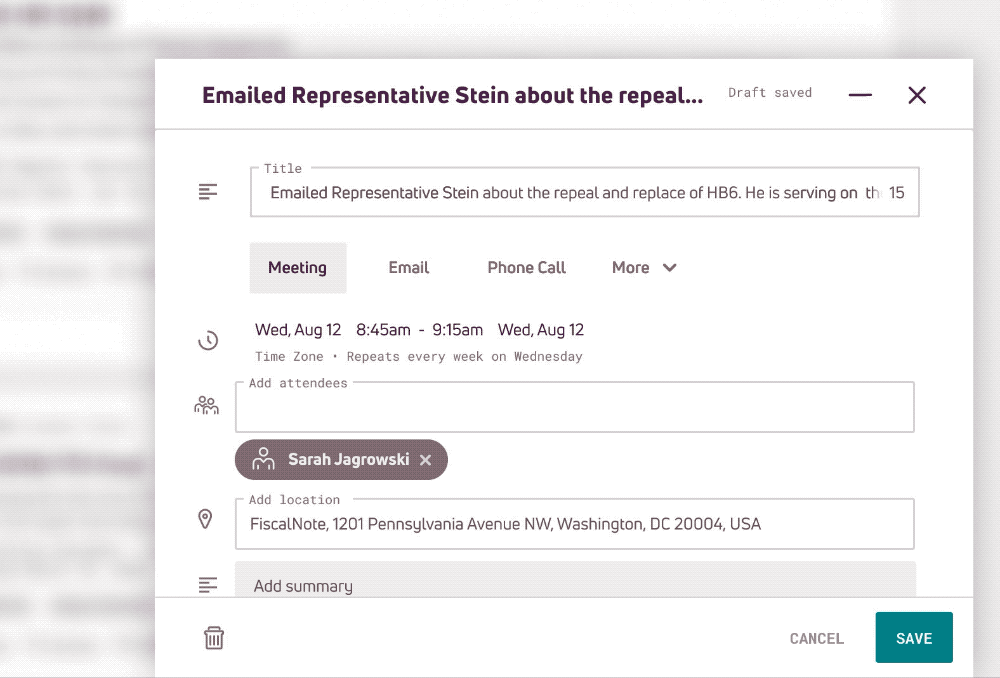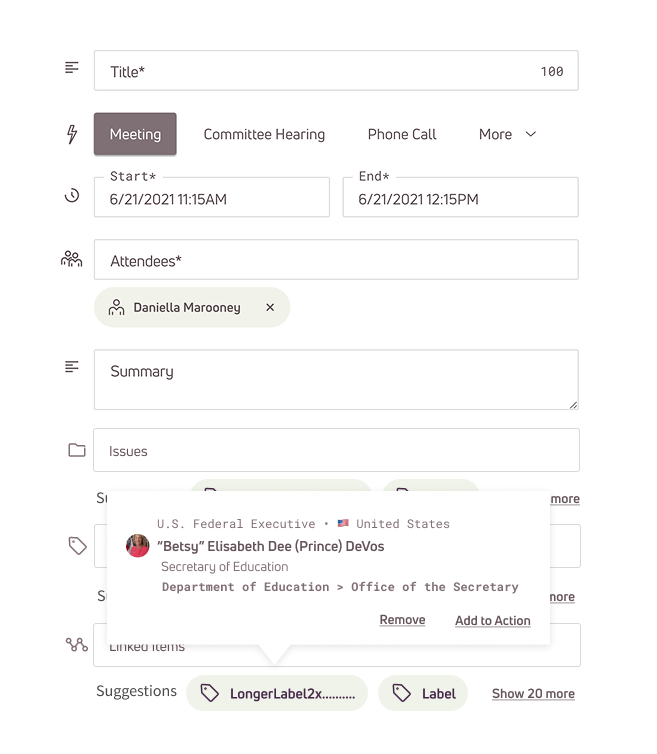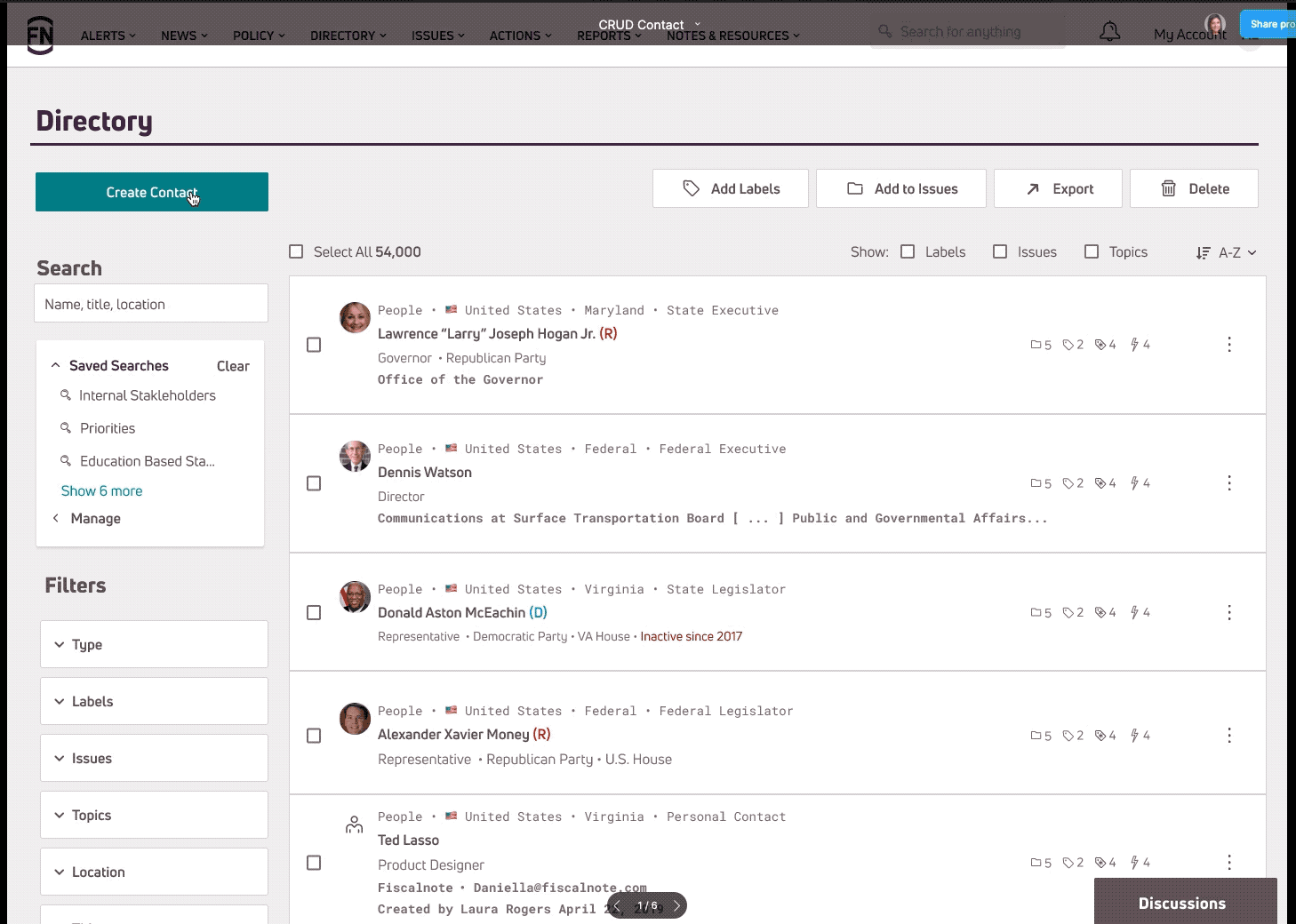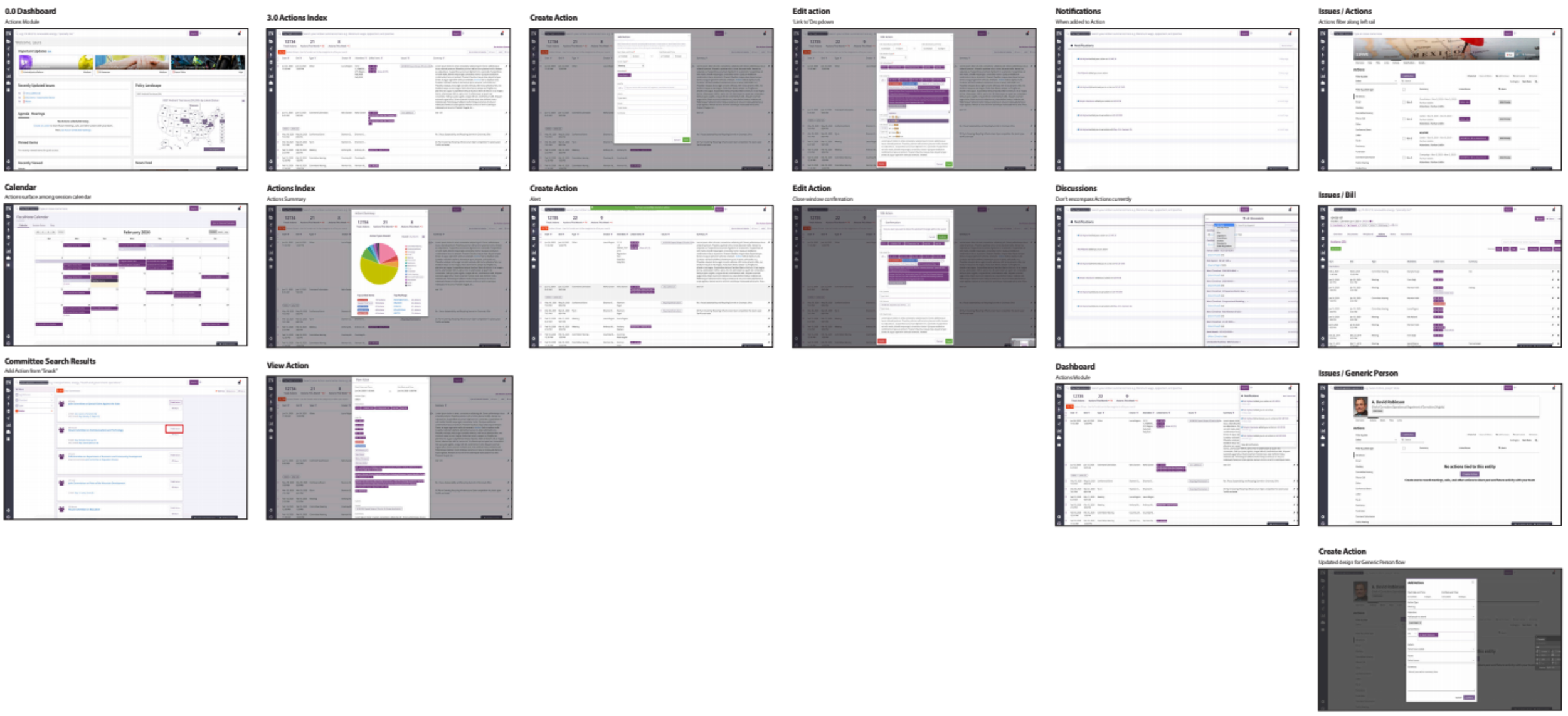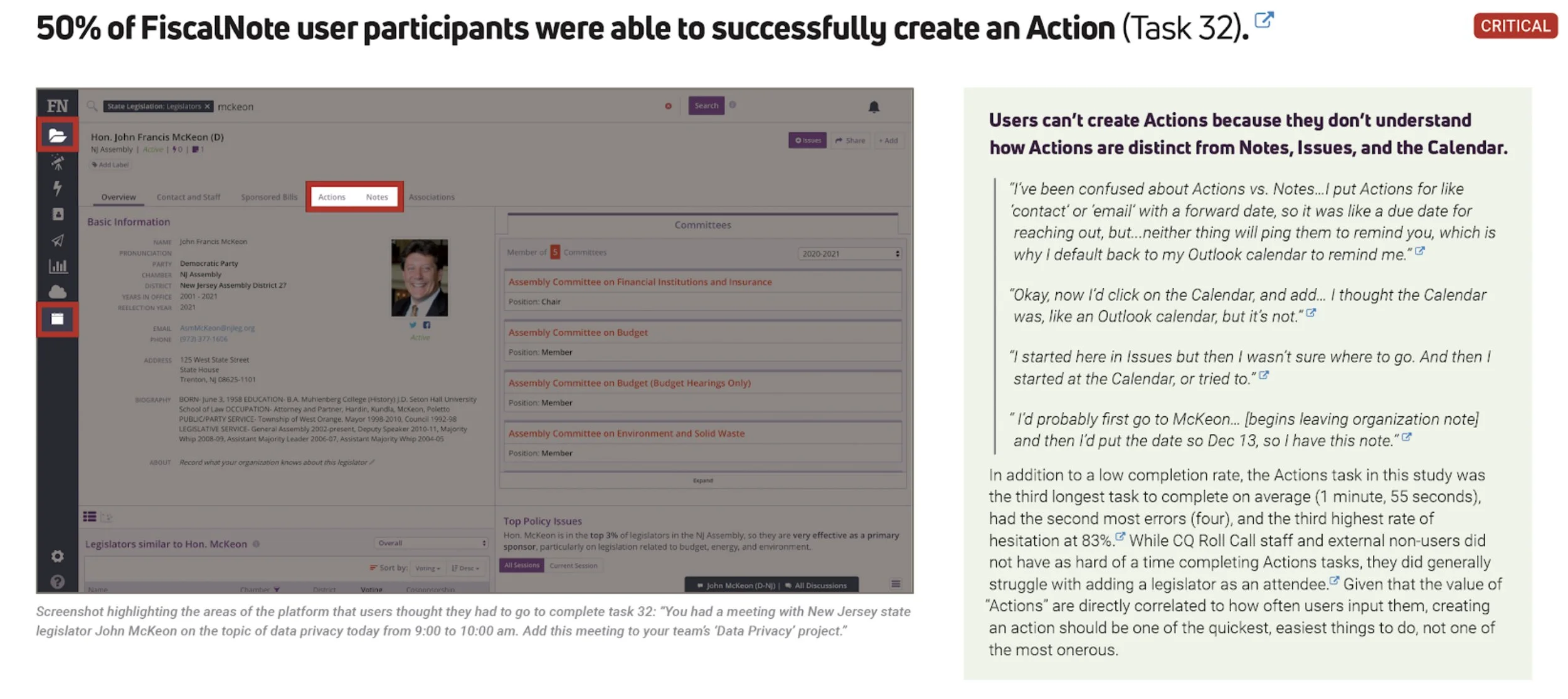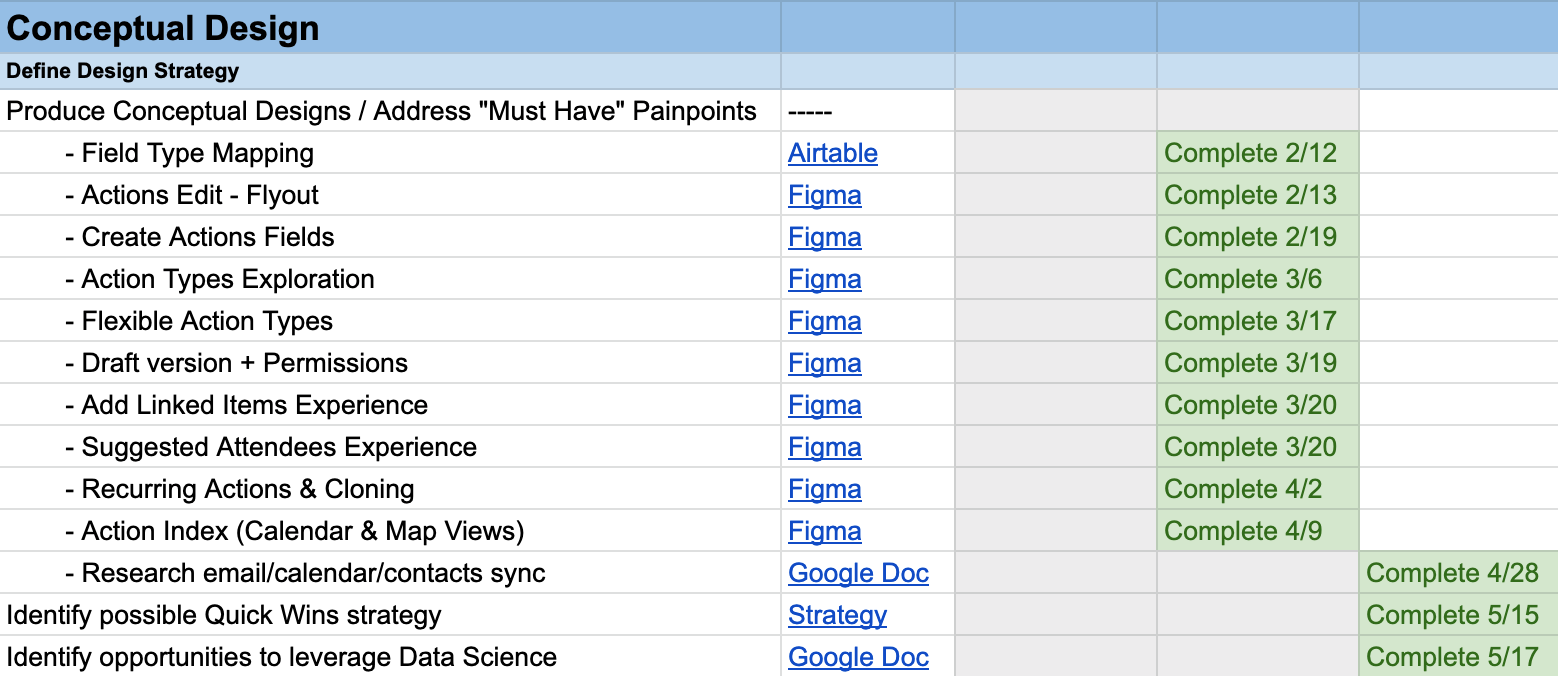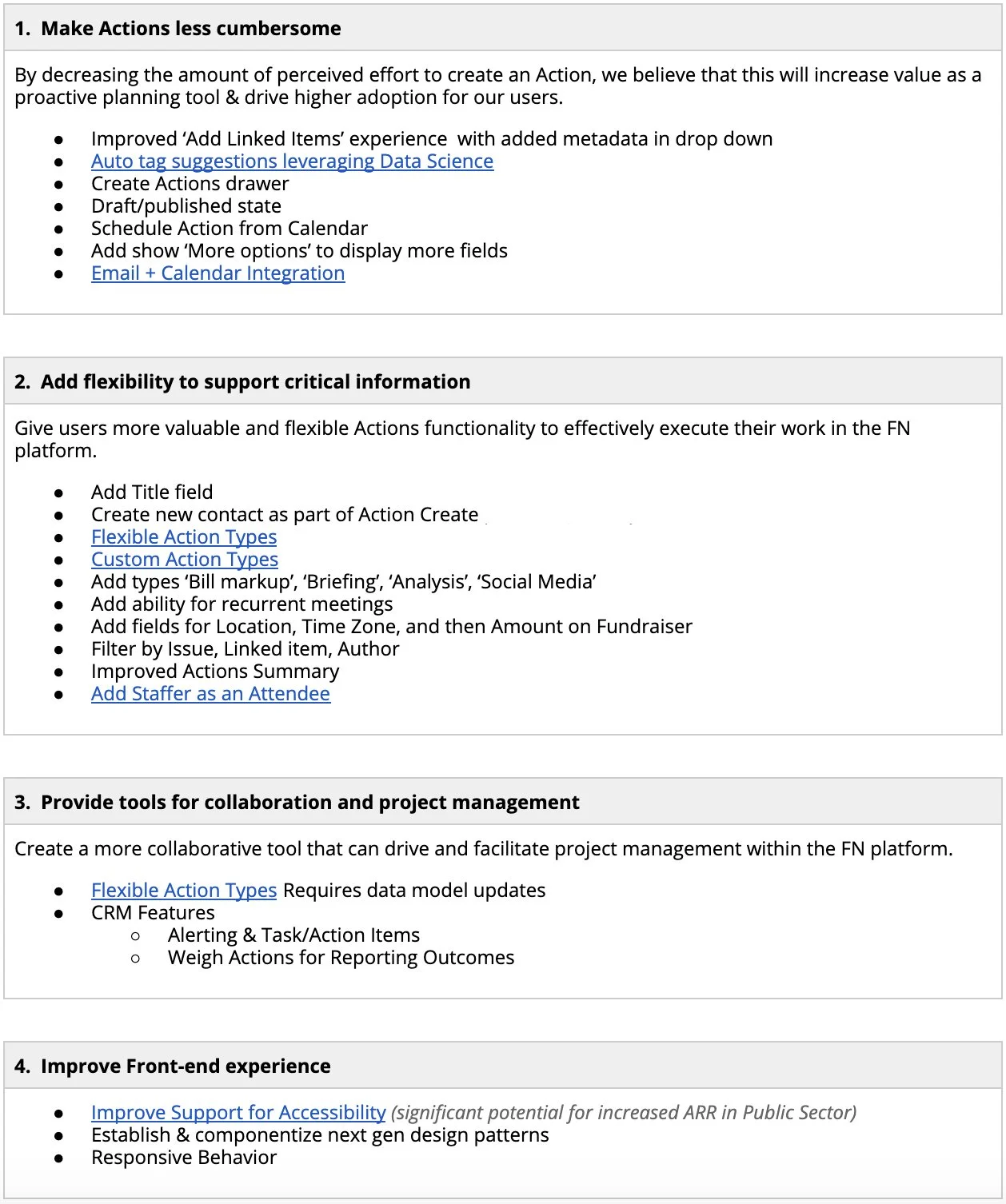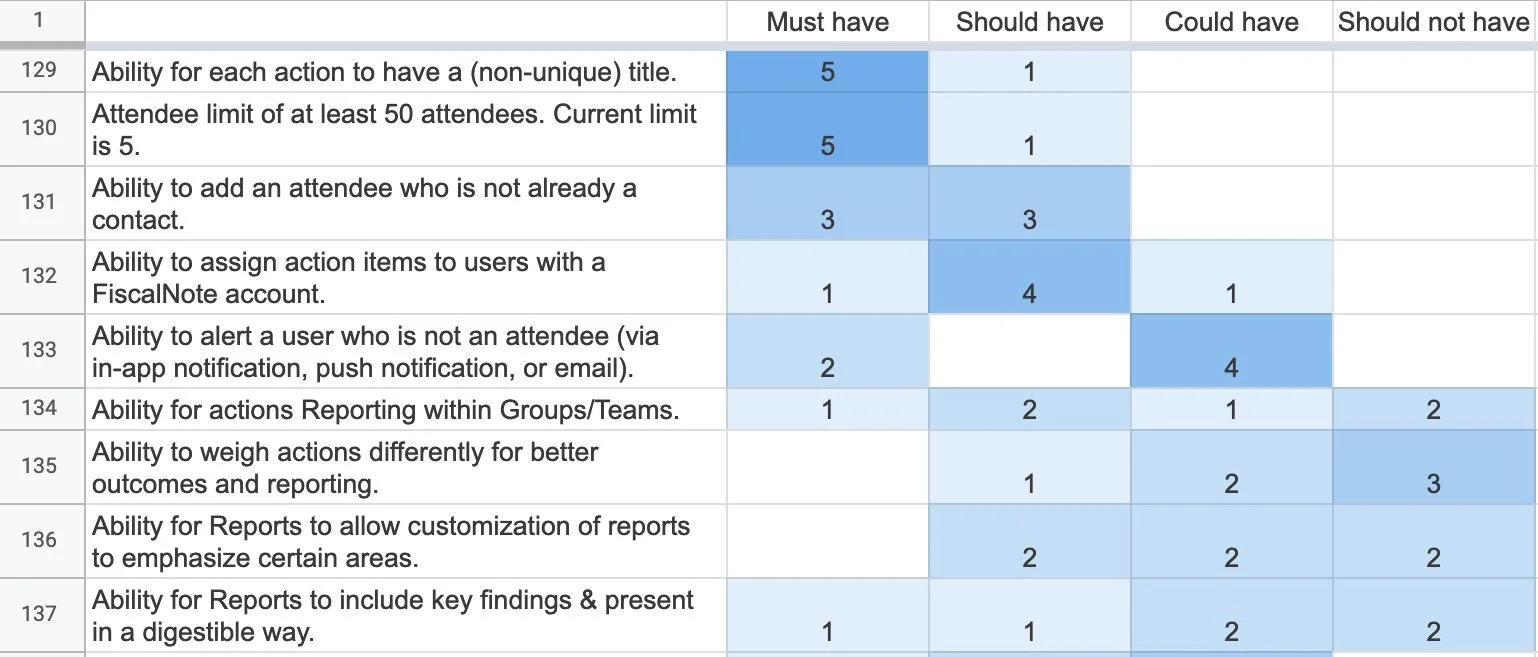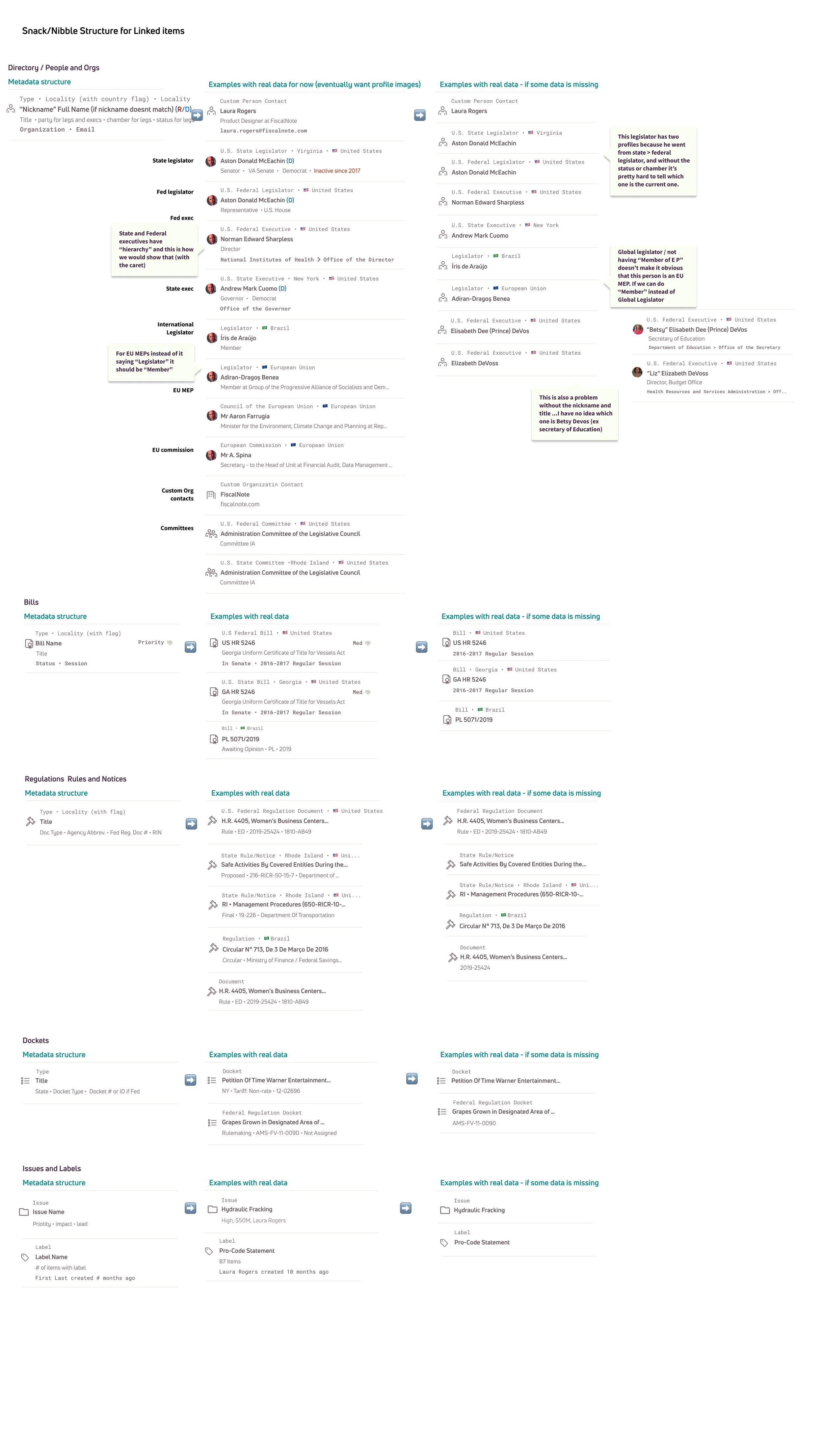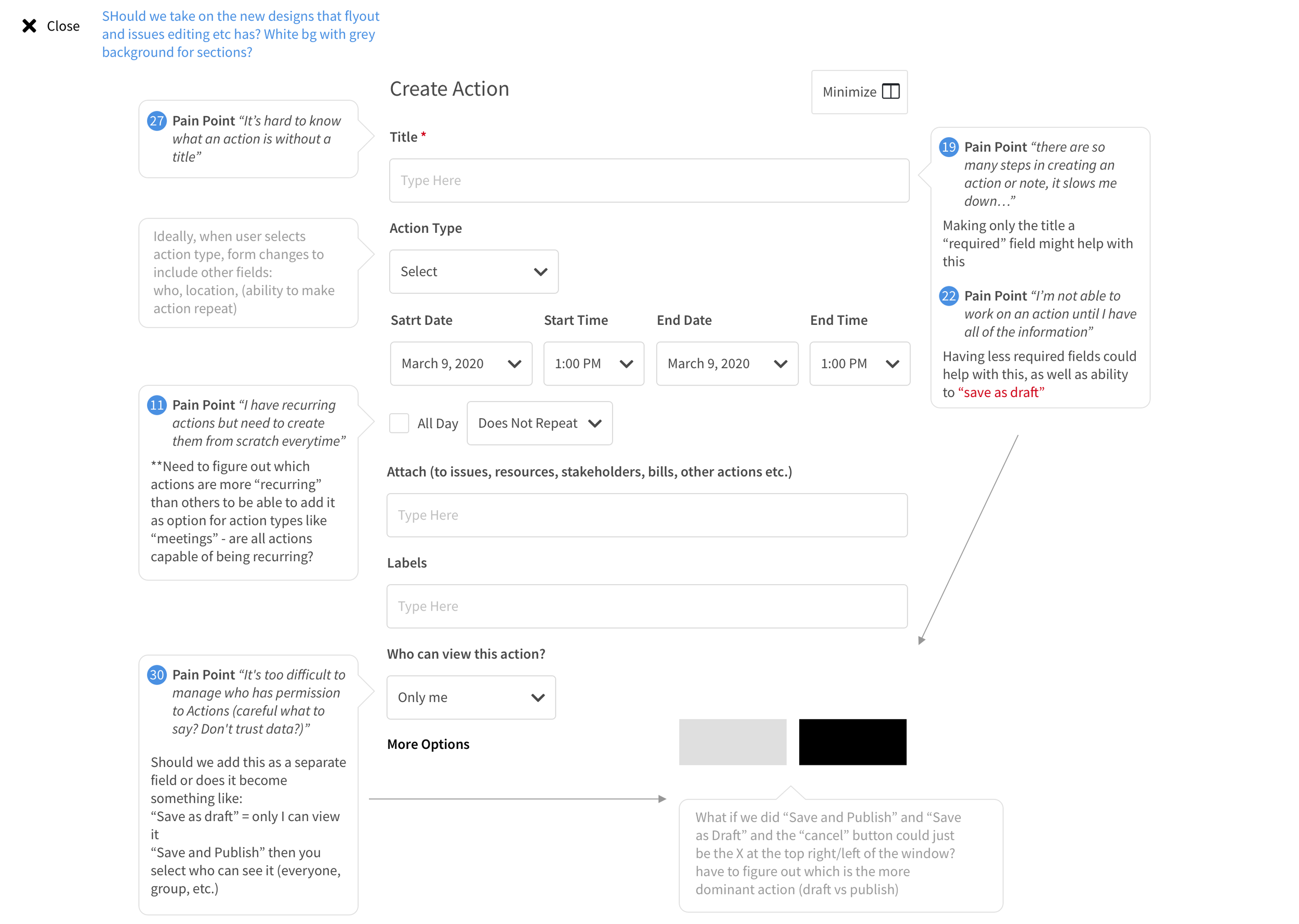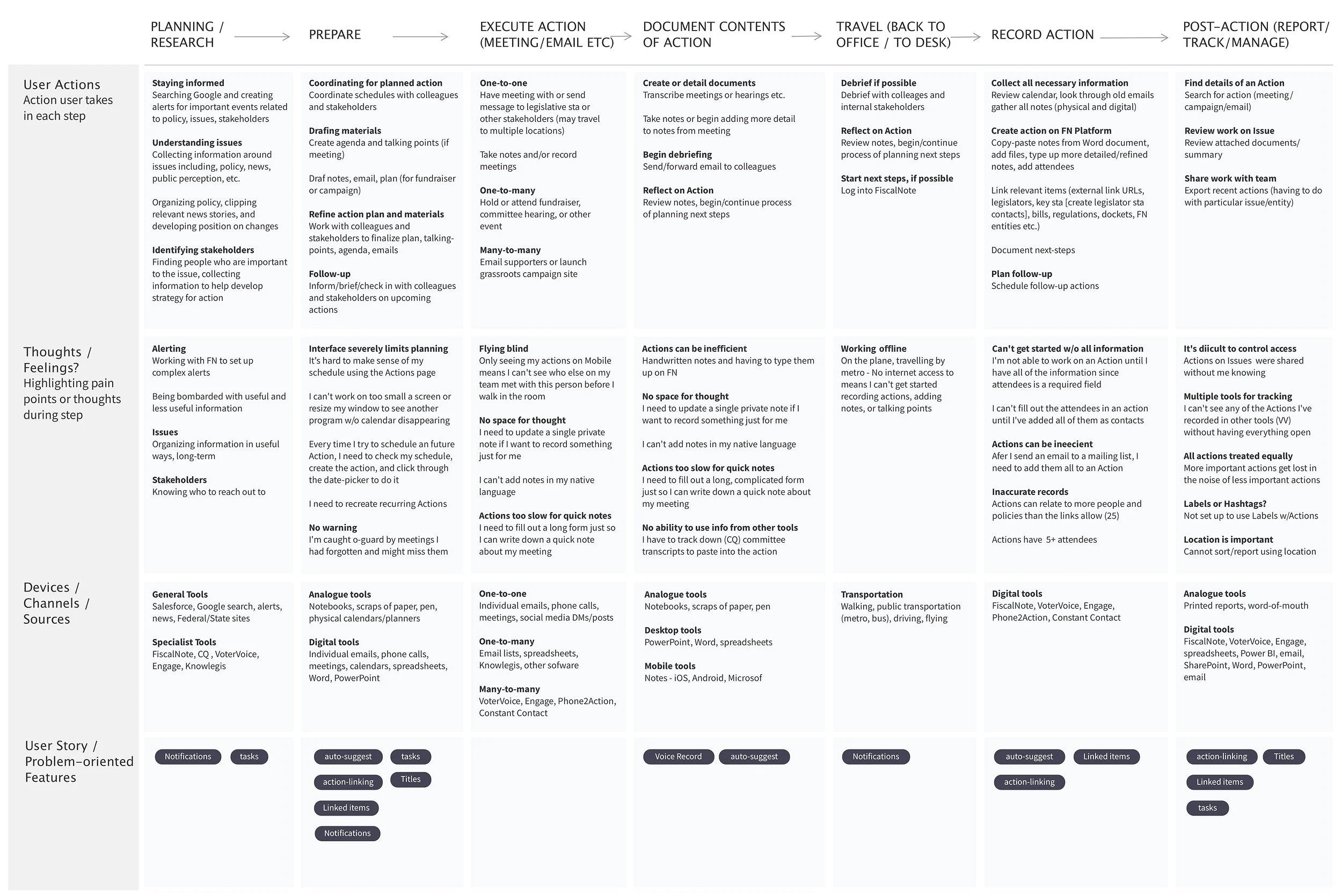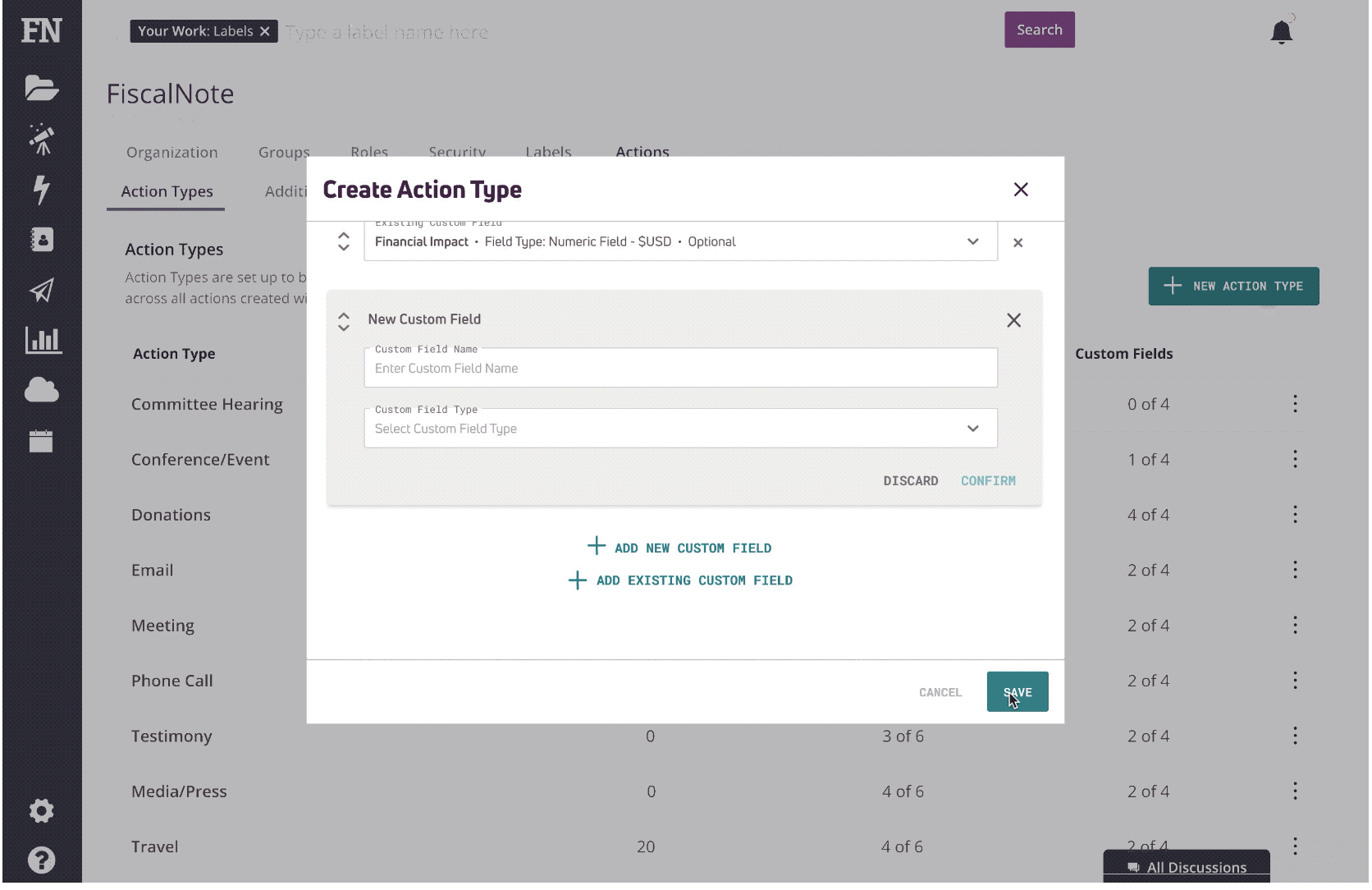Actions Rebuild
FiscalNote supports organizations to monitor, manage, and act on the issues that are important to them by combining policy and stakeholder data with AI technology and expert analysis.
TLDR: Rebuilt the Actions workflow into the backbone of the FiscalNote platform, connecting it seamlessly with stakeholder management, data profiles, and reporting. Projected 47% ARR growth.
Scope: Core workflow for every government affairs activity (meetings, campaigns, legislative efforts). Success here meant success for the rest of the platform.
Role: Lead IC driving research, IA, and interaction design.
Partnered with PMs, engineers, and data science to ensure cross-platform cohesion with AI features and components.
Projected Business Impact
Increase ARR by 47%
Project Overview
Problem & Technical Challenges
- Actions UI was built on old technology (Ember), causing friction for feature improvements.
- Actions UI scored poorly in our all-platform usability study:
- Only 50% of users were able to successfully create an action.
- Third longest task to complete.
- Contained the most errors in completing the task.
- Hesitation at 83%.
- Qualitative interview data from users stated that Actions did not meet their needs:
- Workflow was not intuitive and slow.
- Data did not match their work and lacked flexibility.
- Significantly slowed down their work by manually recording tasks.
Business Goals
- Increase ARR for legacy FN platform and improve user satisfaction.
- Improve user retention and increase revenue.
- Given the value of the Actions UI is directly correlated to how often users input them – it should be one of the quickest tasks.
Solutions
- Migrating and creating new components in Rails allows for quicker updates and usability improvements.
- Improve workflow to include best practices for form flows.
- Work with data science to pre-populate fields (early AI work).
- Add flexible actions – ability for users to create custom actions.
- Add additional data fields for better reporting.
Key Decisions
Unified fragmented workflows into a single, scalable system.
Designed flexible connections to Stakeholders, Reporting, and Data Profiles so nothing was siloed.
Simplified complex policy workflows into modular UI patterns for reuse across the platform.
Projected Business Impact & Results
Three key clients experiencing these pain points represented $850K in ARR. Post-implementation, user satisfaction was expected to increase dramatically, leading to contract renewals and expansion opportunities. and resulting in a 47% ARR increase from improved retention.
47%
Increase in ARR
Key clients to report significant ROI improvements in their workflow.
65%
Time Saved
Reduction in manual tracking and task completion for users.
89%
User Satisfaction
Improvement in usability scores.
$2.3M
Revenue Impact
Attribute to improved user retention.
Process
1
Research and Analysis
Conducted user interviews with 15+ government affairs officials to understand workflow pain points and inefficiencies.
2
User Journey Mapping
Mapped existing workflows and identified key friction points in action tracking and reporting processes.
3
Interface Design
Created intuitive design flows with clear visual hierarchy, making complex data accessible and actionable.
4
Implementation and Design
Iterative rollout with user feedback integration, resulting in 89% satisfaction rate among beta users.
Early AI Features
Solutions
Pattern Recognition: AI identifies recurring action types
Smart Suggestions: Context-aware text completion
Auto-linking: Connects bills, stakeholders, campaigns
Trust Through Transparency: Always show WHY
Strategic Scoping
Vision: Full workflow pattern recognition
MVP: Focus on data linking and categorization
Rationale: Build trust before advanced features
Product Cohesion
Introduced a consistent drawer pattern for all CRUD actions, allowing users to create and edit without losing context.
This drawer became a platform standard — users could view while creating, keeping workflows seamless across features.
Rebuild explicitly tied together reporting and stakeholder management, making Actions the central hub. Instead of bouncing between disconnected modules, users had a single, integrated flow that supported the entire lifecycle of policy work.
Decisions here weren’t just UI fixes — they were architectural, shaping how the entire FiscalNote platform handled data creation and consumption.
Assets & Proof
Research, Analysis & Mockups
Existing UI flow Audit to take inventory of what existed and how we can improve.
Listing out all fields and functionality
User research summary from usability study
Timeline of assets and resources for visibility and organization.
Listing out solutions mapped to pain points and grouping features together for epics.
Tracking all features and fixes.
Card sort activity to prioritize features and improvements.
Information Architecture Data Mapping
Mapping existing fields to pain points and exploring possible solutions
Recurring Actions - All Day
Recurring Actions - Repeating
Recurring Actions - Changing Time Zone
Recurring Actions - Custom Repeat
Recurring Actions - End Custom Repeat
Recurring Actions Update Repeating Action
Recurring Actions - Delete Repeating Action
Journey Map
Flexible Actions
Flexible actions - allowing admin users to create an actions form field from scratch by choosing the field type and creating labels.
Flexible actions - allowing admin users to create their own action type for better reporting.
Flexible actions - allowing admin users flexibility to build form fields from existing and saved field widgets.
Prototype of new actions flow - I designed the form field to be placed in a drawer to allow users to copy and paste information they were reviewing while creating an action and filling out the fields. I incorporated functionality to auto-populate fields and worked with data science to allow for auto smart suggestions and auto - tagging.
Project Outcome & Estimated Impact
Flexible actions - allowing admin users to create an actions form field from scratch by choosing the field type and creating labels.
$2.3M
Total projected revenue impact attributed to user experience improvements.




